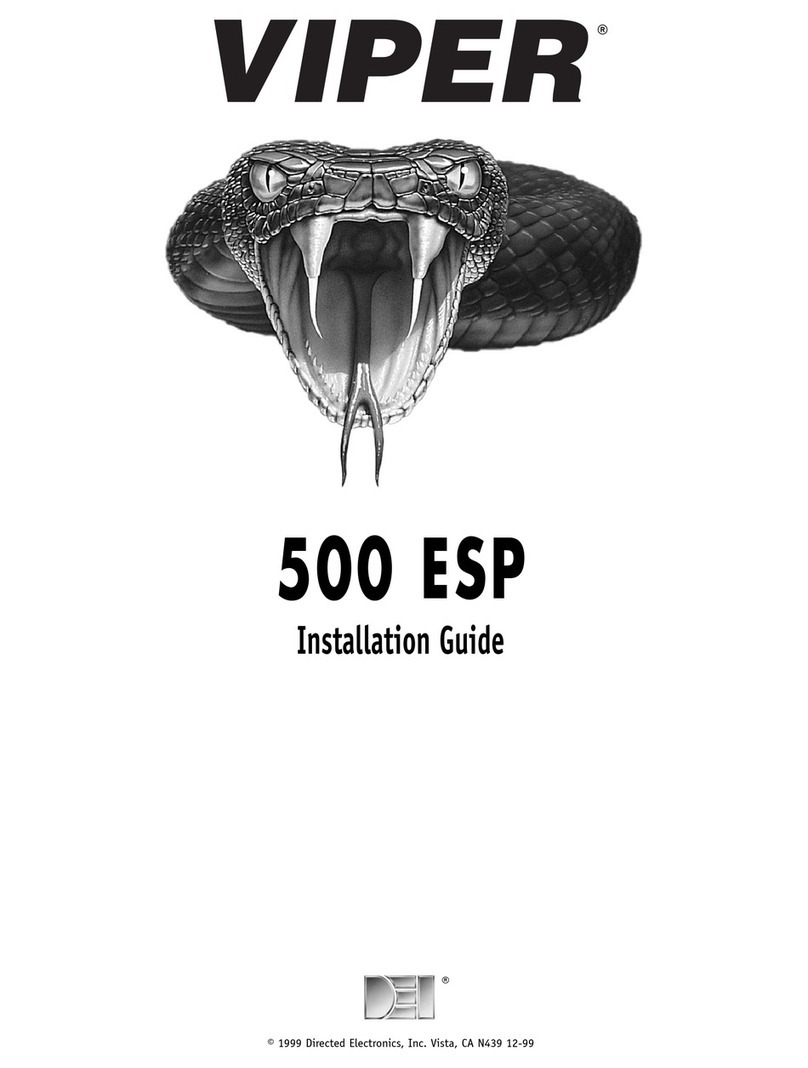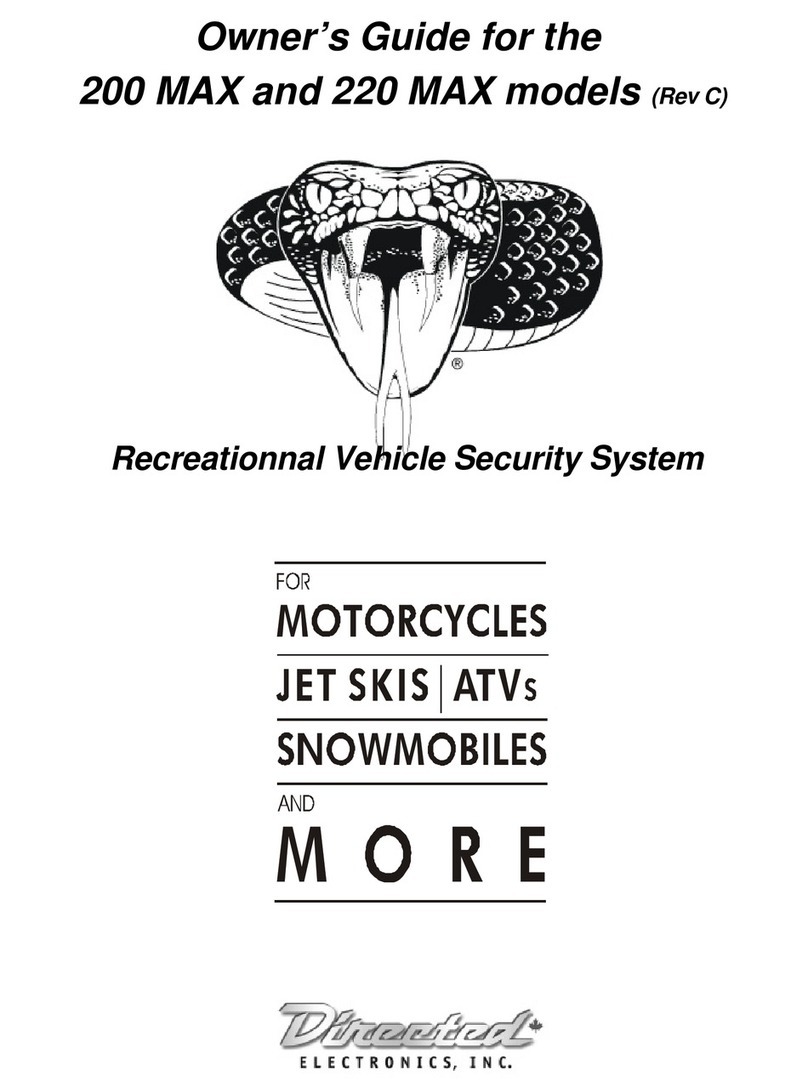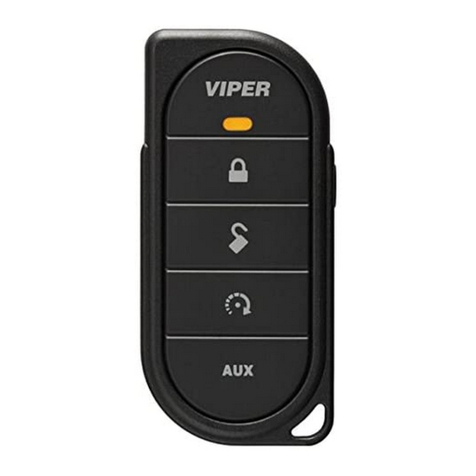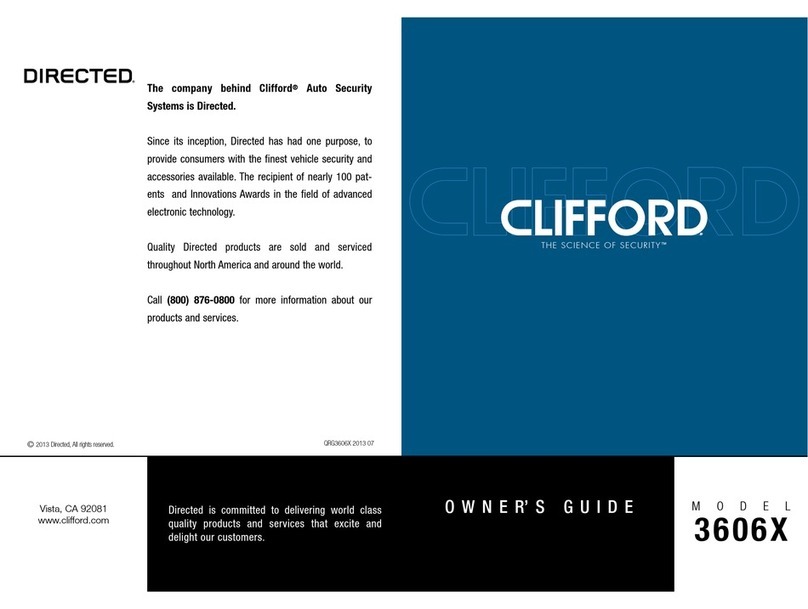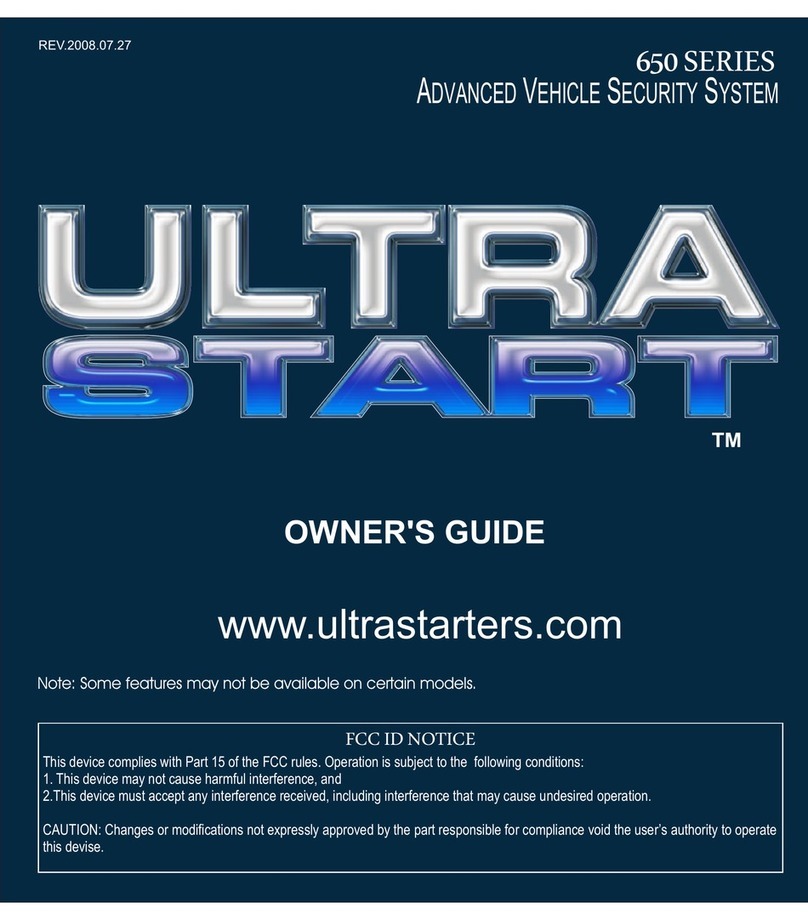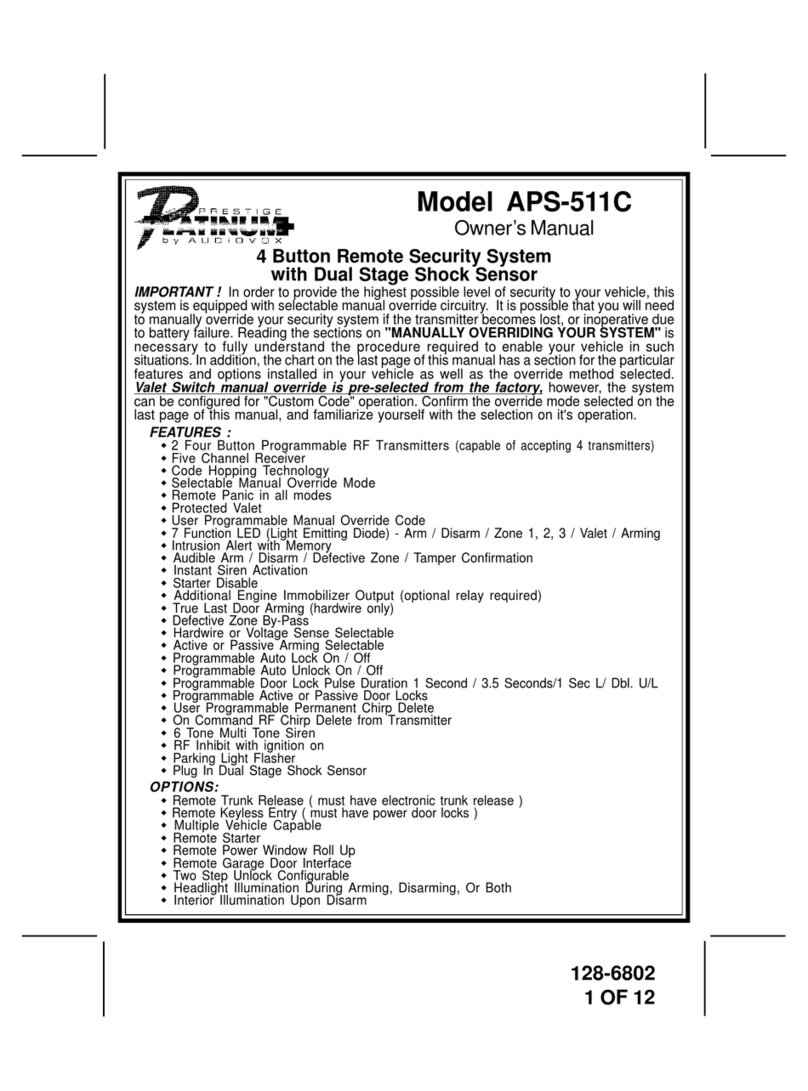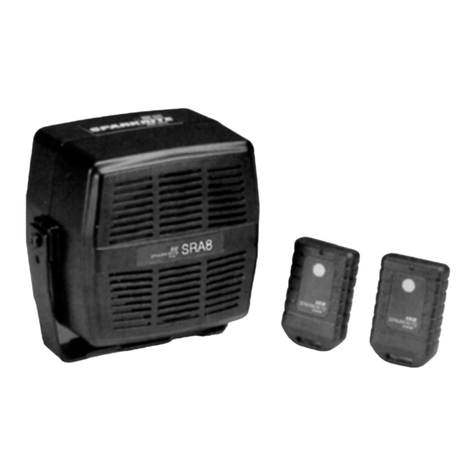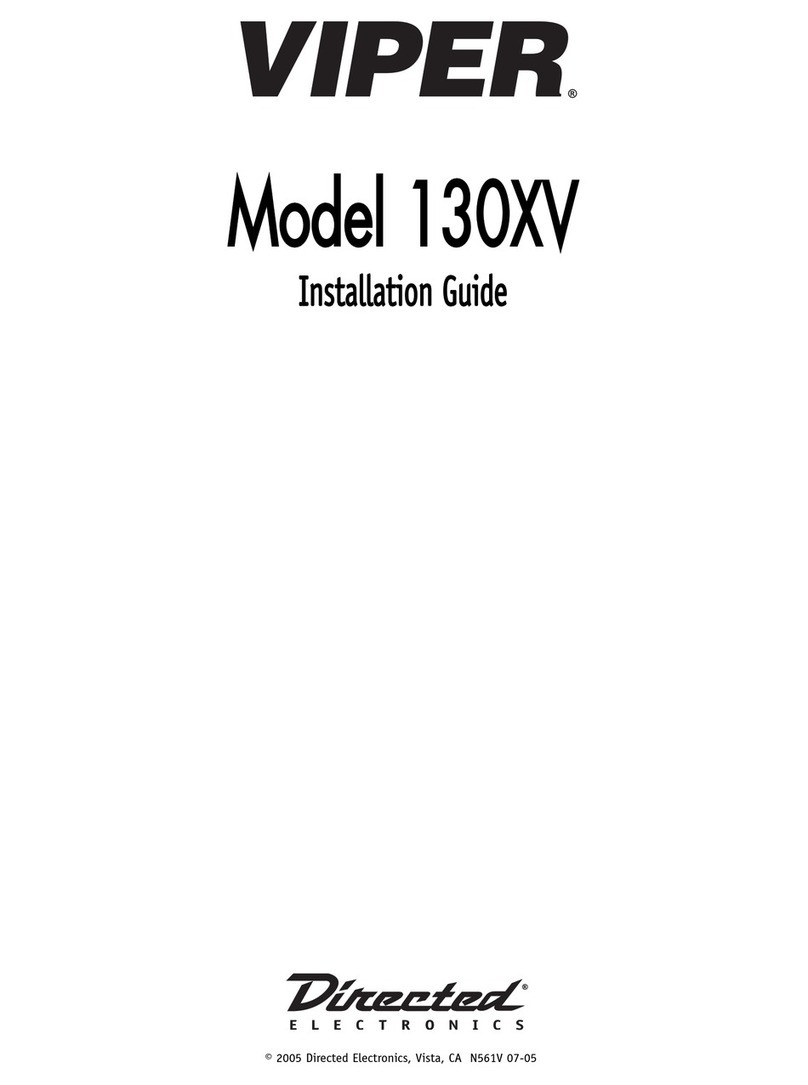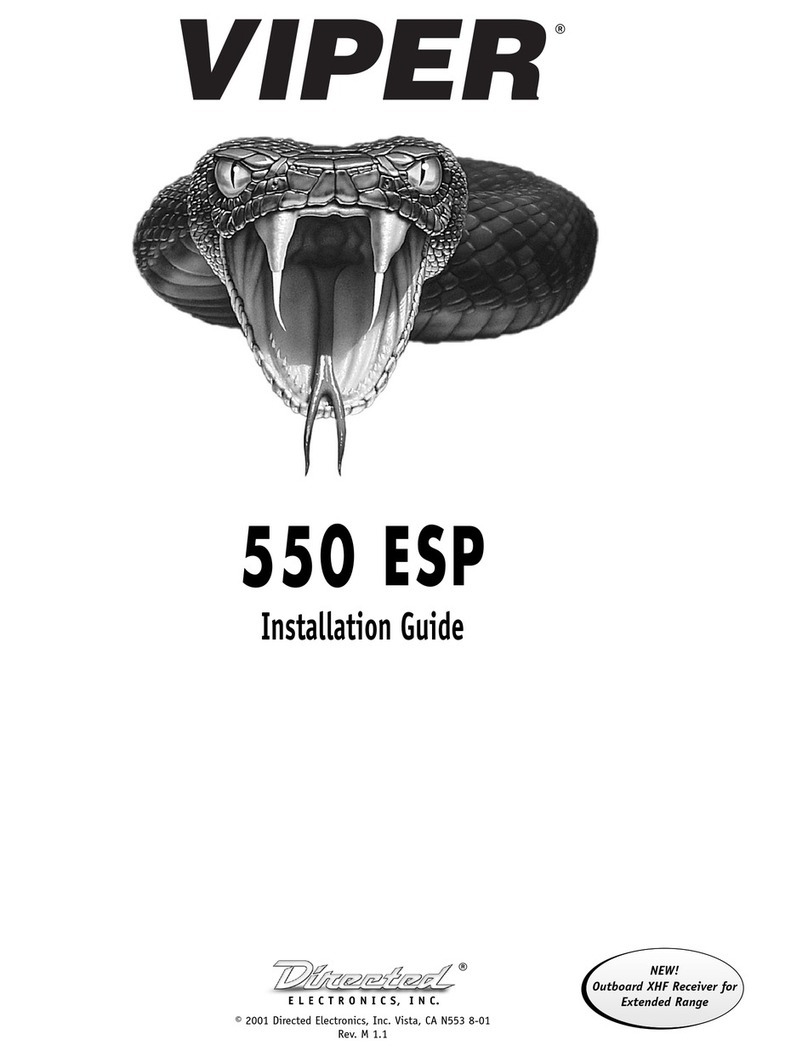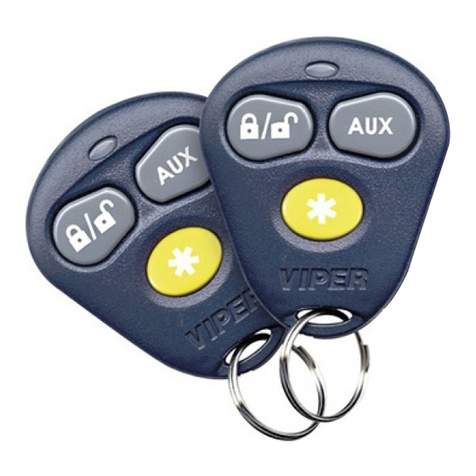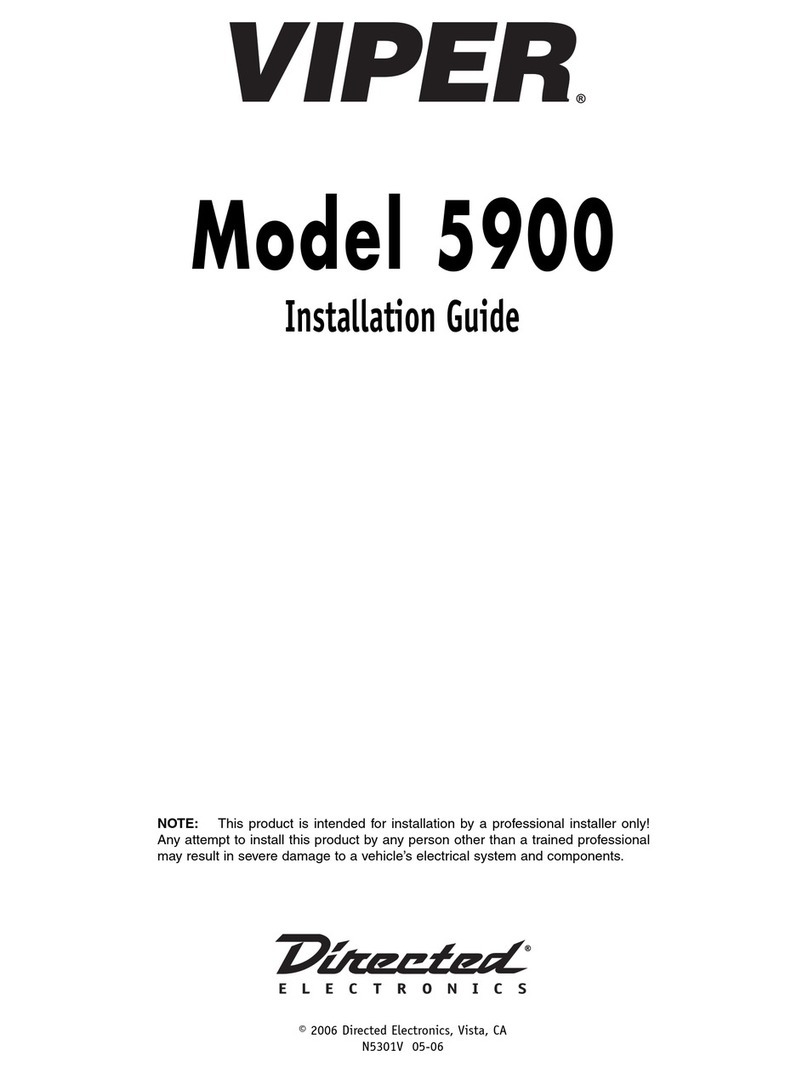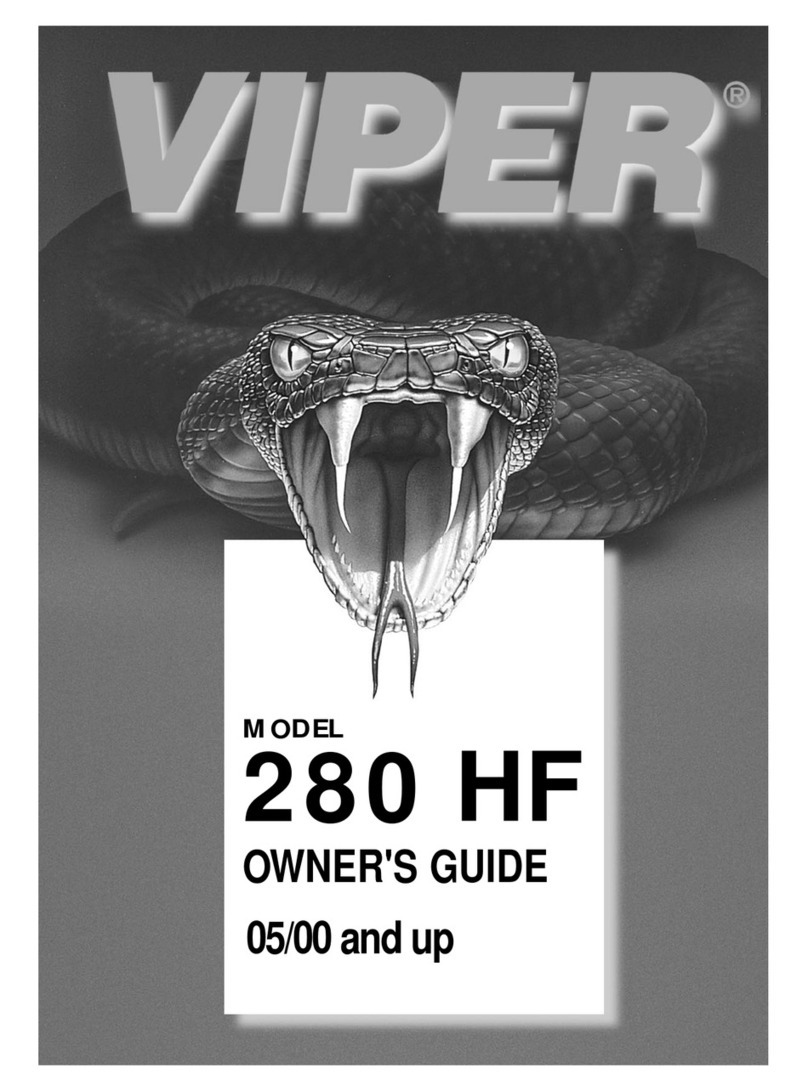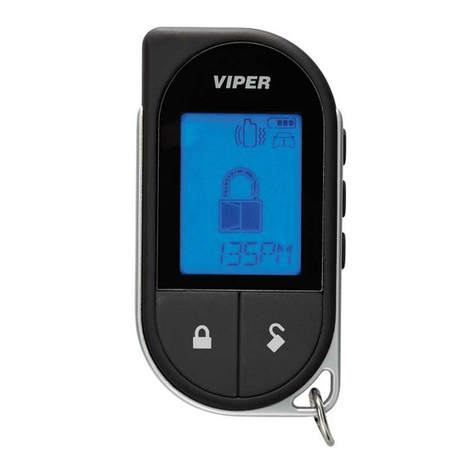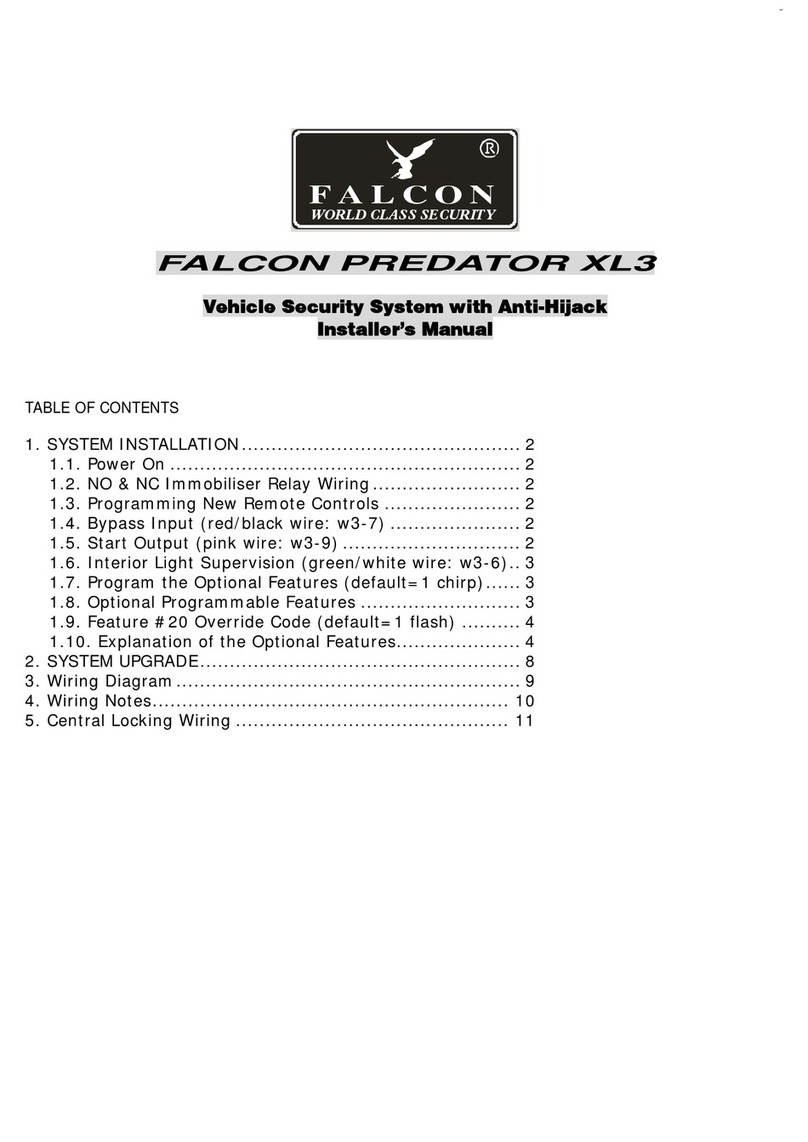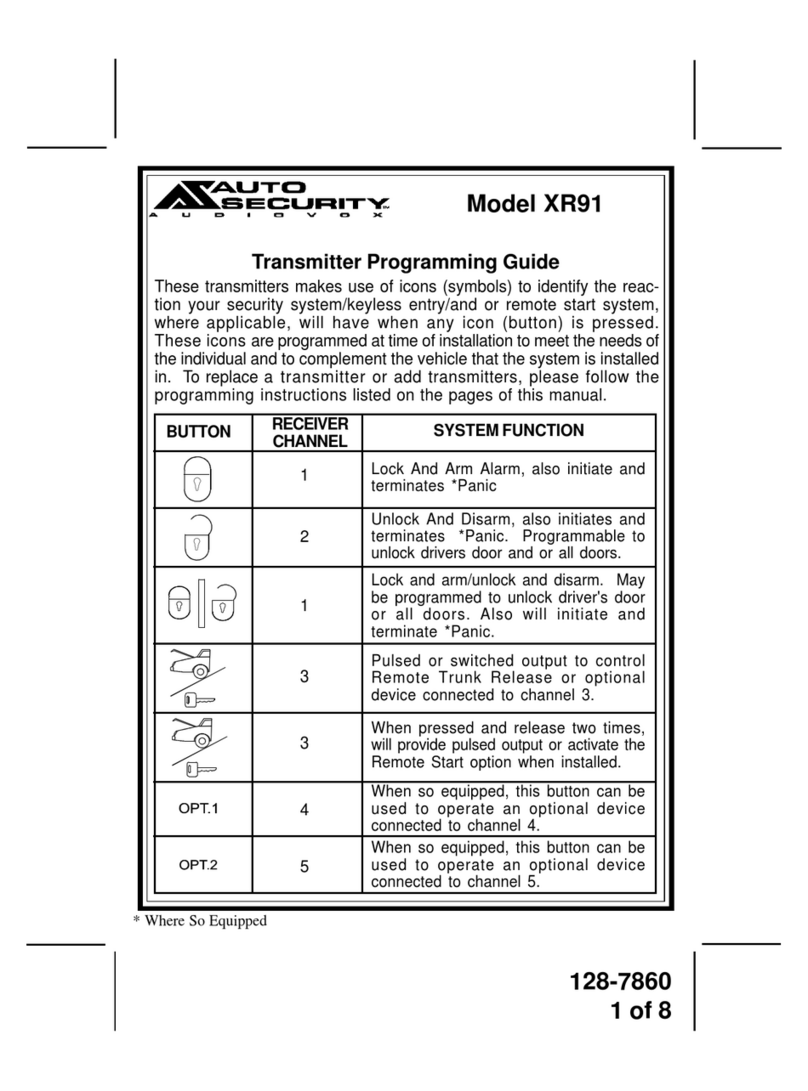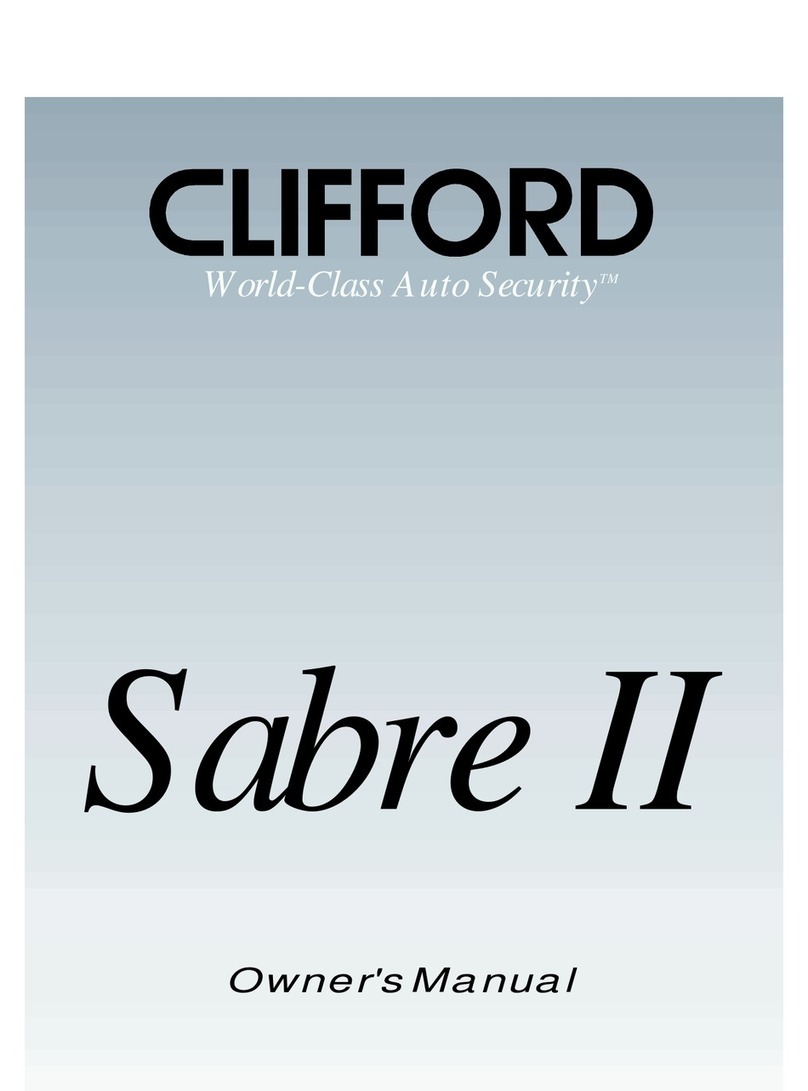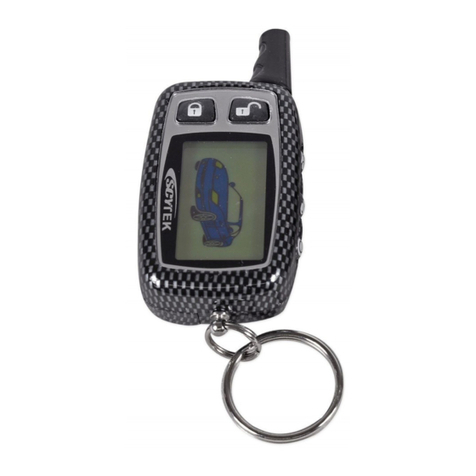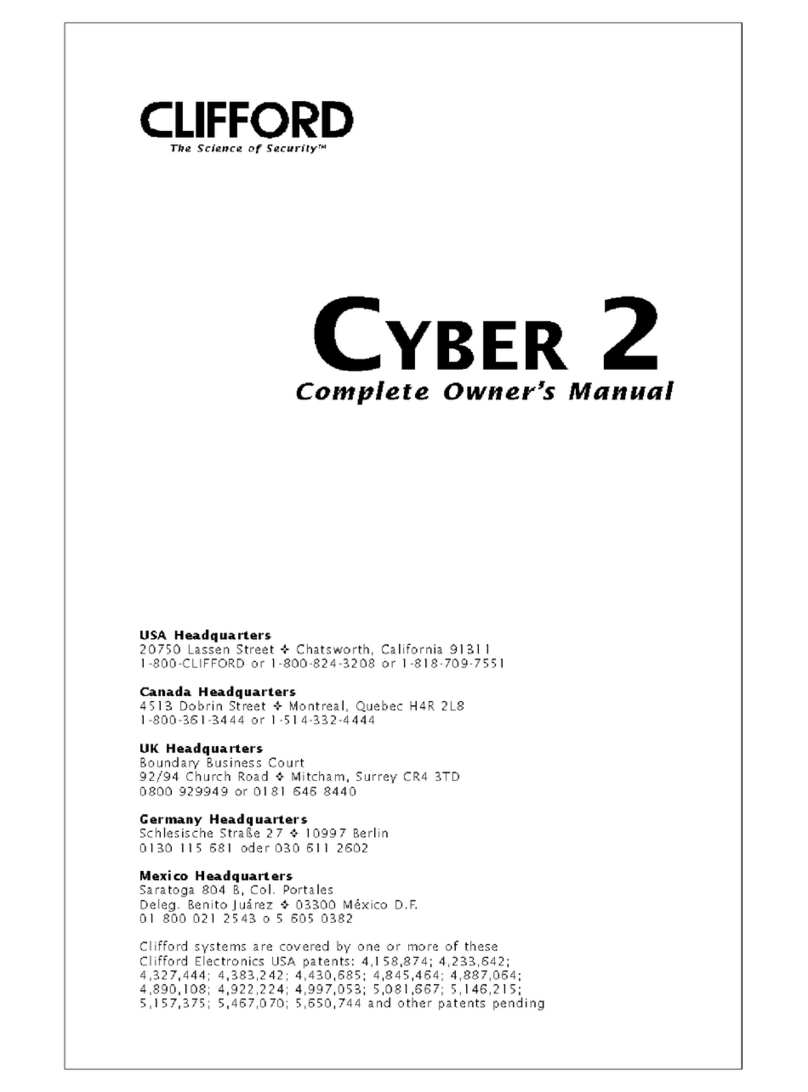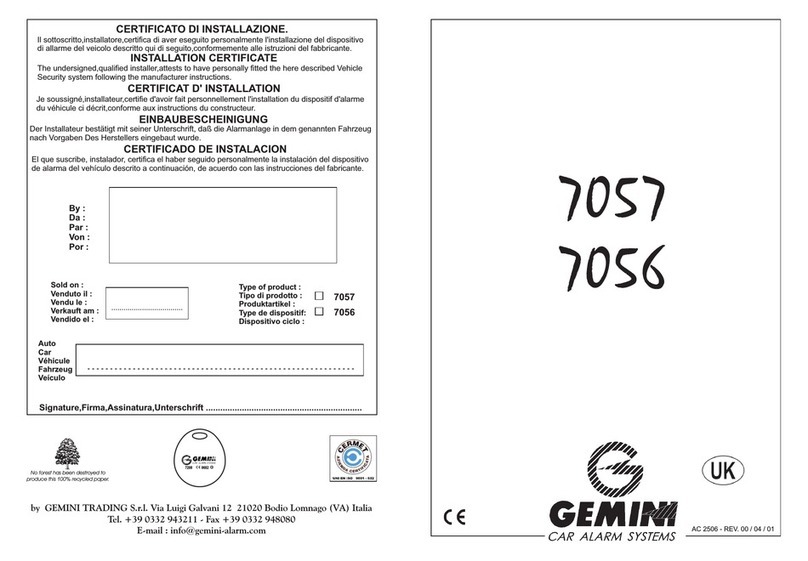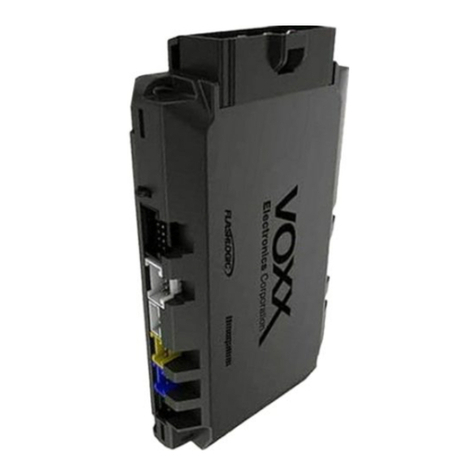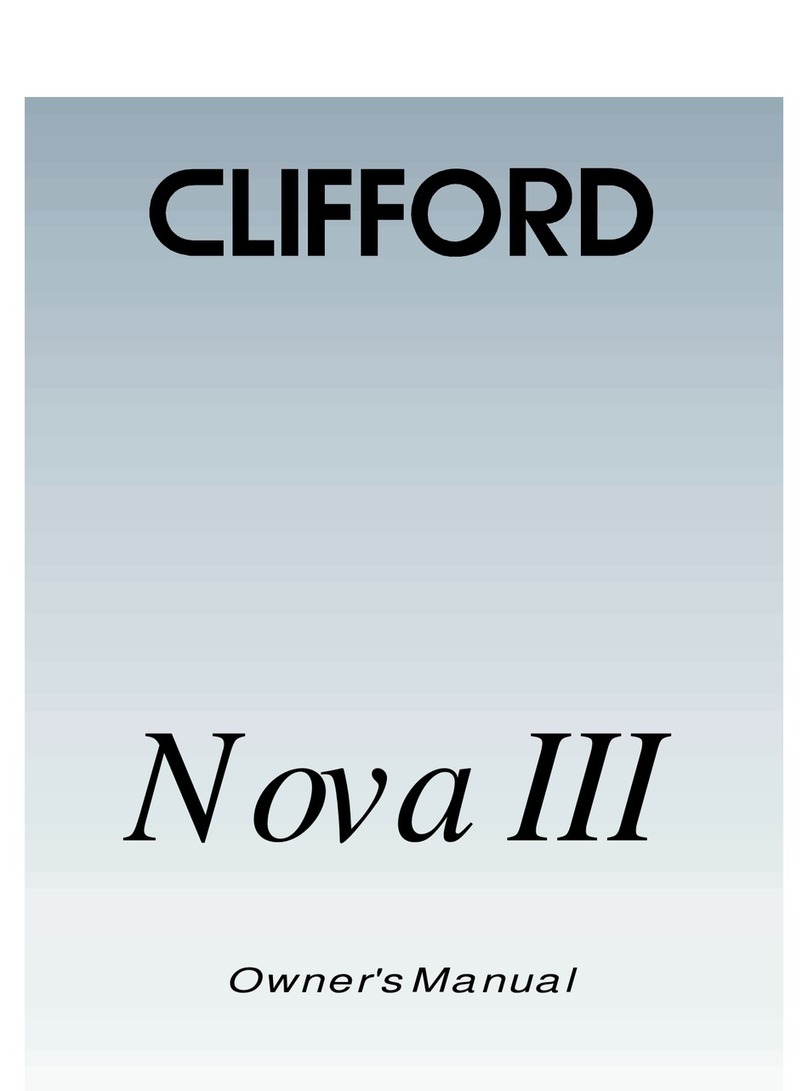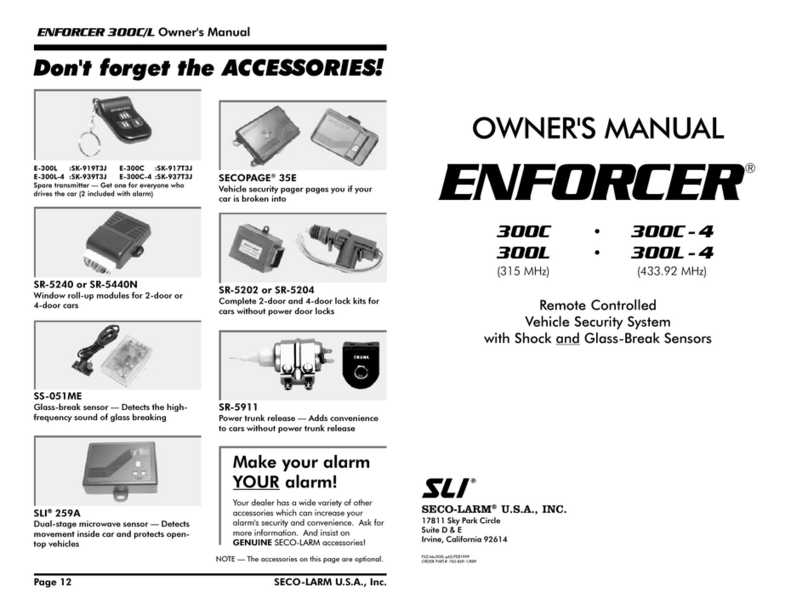22© 2004 Directed Electronics, Inc. Vista, CA
ttaabblleeooffccoonntteennttss
Avital
®
, Bitwriter
™
, Stealth Coding Technology
™
, Doubleguard
®
, ESP
™
, FailSafe
®
, Ghost Switch
™
,
Learn Routine
™
, Nite-Lite
®
, Nuisance Prevention Circuitry
®
, NPC
®
, Revenger
®
, Silent Mode
™
, Soft
Chirp
®
, Stinger
®
, Valet
®
, Vehicle Recovery System
®
, VRS
®
, and Warn Away
®
are all Trademarks or
Registered Trademarks of Directed Electronics, Inc.
wwhhaattiissiinncclluuddeedd..................................................................................................................................33
pprriimmaarryyhhaarrnneessss((HH11))wwiirreeccoonnnneeccttiioonngguuiiddee..........
..................................................................................33
ddoooorrlloocckkhhaarrnnees
sss((HH22))wwiirreeccoonnnneeccttiioonngguuiiddee........................................................................................88
identifying the door lock system . . . . . . . . . . . . . . . . . . . . . . . . . . . . . . . . . . . . . . . . . . . . . . . . . . . 8
at the switch . . . . . . . . . . . . . . . . . . . . . . . . . . . . . . . . . . . . . . . . . . . . . . . . . . . . . . . . . . . . . . . . 9
type A: positive-triggered, relay-driven system . . . . . . . . . . . . . . . . . . . . . . . . . . . . . . . . . . . . . . . . 10
type B: negative-triggered, relay-driven system . . . . . . . . . . . . . . . . . . . . . . . . . . . . . . . . . . . . . . . . 11
type C: reversing polarity system . . . . . . . . . . . . . . . . . . . . . . . . . . . . . . . . . . . . . . . . . . . . . . . . . . 12
type D: adding one or more after-market actuators. . . . . . . . . . . . . . . . . . . . . . . . . . . . . . . . . . . . . . 13
type E: electrically-activated vacuum . . . . . . . . . . . . . . . . . . . . . . . . . . . . . . . . . . . . . . . . . . . . . . . 14
type F: one-wire system (cut to lock, ground to unlock) . . . . . . . . . . . . . . . . . . . . . . . . . . . . . . . . . . 15
type G: positive (+) multiplex . . . . . . . . . . . . . . . . . . . . . . . . . . . . . . . . . . . . . . . . . . . . . . . . . . . . 16
type H: negative (-) multiplex. . . . . . . . . . . . . . . . . . . . . . . . . . . . . . . . . . . . . . . . . . . . . . . . . . . . 18
pplluugg--iinnLLEEDDaannddvvaalleett//pprrooggrraammsswwiittcchh..............................
....................................................................2233
iinntteerrnnaallpprrooggrraammmmiinnggjjuummppeerr.
...........................................................................................................2233
light flash jumper . . . . . . . . . . . . . . . . . . . . . . . . . . . . . . . . . . . . . . . . . . . . . . . . . . . . . . . . . . . . 23
oonn--bbooaarrdddduuaallssttaaggeeiimmppaaccttsseennssoorr.......................................................
...............................................2244
bbyyppaassssiinnggsseennssoorriinnppuuttss...........................
...........................................................................................2244
ttrraannssm
miitttteerr//rreecceeiivveerrlleeaarrnnrroouuttiinnee........................................................................................................2255
33--bbuuttttoonnttrraannssmmiitttteerrccoonnffiigguurraattiioonn...............................
.......................................................................2277
44--bbuuttttoonnttrraannssmmiitttteerrccoonnffi
igguurraattiioonn............................................................................................
..........2277
ssyysstteemmffeeaattuurreesslleeaarrnnrroouuttiinnee..........................................................
....................................................2288
ffeeaattuurreessmmeennuu................................
..................................................................................................229
9
ffeeaattuurreeddeessccrriippttiioonnss...............................................................................
...........................................2299
nnuuiissaanncceepprreevveennttiioonncciirrccuuiittrryy™™........................
....................................................................................3311
ttaabblleeooffzzoonne
ess..................................................................................................................................3322
ttrroouubblleesshhoooottiinngg...................................................
.............................................................................3322
wwiirriinnggqquuiicckkrreeffeerreen
ncceeddiiaaggrraamm............................................................................................................3344
